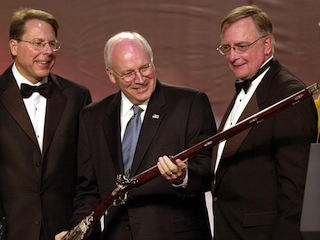What do a 1995 attack on a Japanese subway system, the crumbling security at Libyan military bases and al-Qaeda’s putative ambitions to create a “dirty bomb” have in common? They all sound scary, and therefore all fit (albeit with no small handwaving) into the latest narrative of the “threat” of Syria.
 With the ink barely dried on the latest calls for NATO intervention in Syria, the Washington Post has emerged with an article brimming with unrelated factoids, most of which have not even a cursory relation to Syria, arguing that the nation’s WMD arsenal is something to be greatly feared.
With the ink barely dried on the latest calls for NATO intervention in Syria, the Washington Post has emerged with an article brimming with unrelated factoids, most of which have not even a cursory relation to Syria, arguing that the nation’s WMD arsenal is something to be greatly feared.
The timing is brazen, being paired with another Washington Post article on rebel calls for NATO to attack the nation. It also comes just days after Dick Cheney, busily parlaying his book and the media’s notoriously short term memory into a restoration from hawkish caricature to “gravitas” wielding elder statesman, lamented his inability to start a war in Syria.
The fast and loose effort to cram anything and everything into the article is equally telling, as vague mentions of “dirty bombs” using fuel rods that Syria does not possess in particularly useful numbers combine with theories about nerve gas somehow polluting the world’s drinking water and food playing equal roles in a familiar game: frightening the public about an illusory enemy on the eve of dropping a bomb about the administration’s intentions to drop literal bombs on them.
That such a fanciful tale worked in the past was shameful enough. That it is being tried again while the occupation of the last “WMD threat” is still going on is nothing short of shocking.


